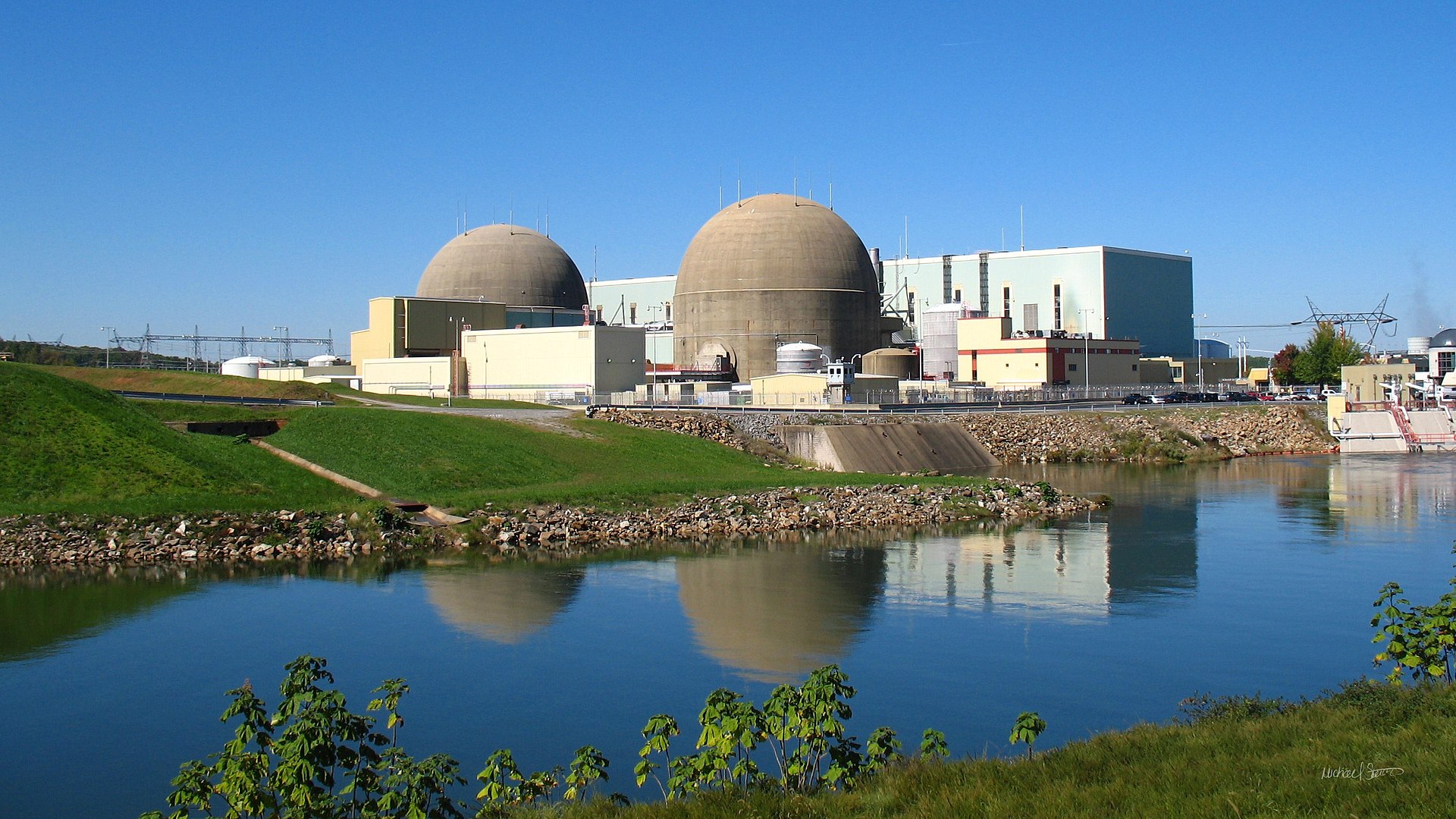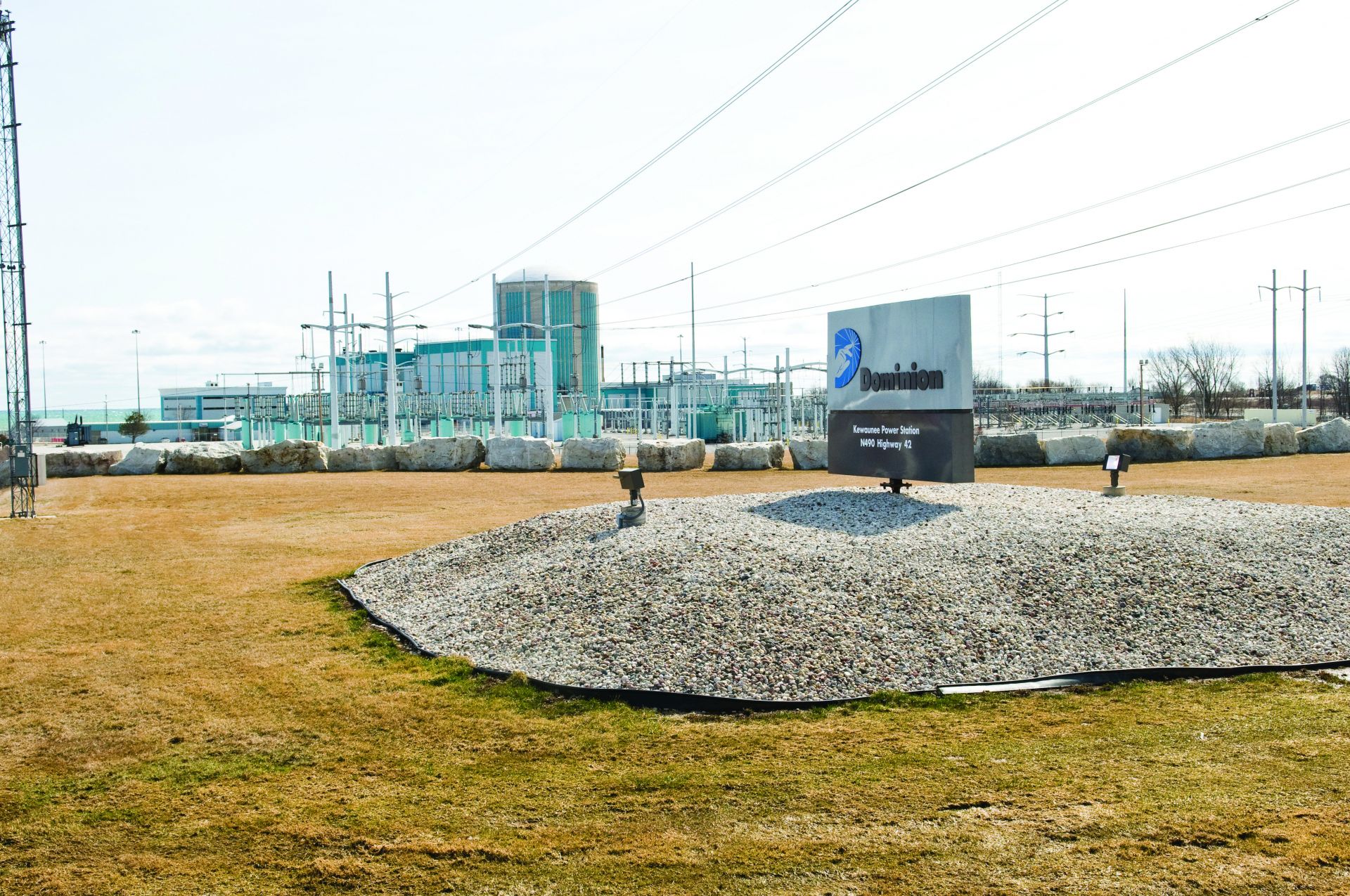Amazon investing in SMRs to deploy 5 GW by 2039

Tech giant Amazon announced Wednesday new partnerships with Dominion Energy and X-energy to develop and deploy 5 gigawatts of nuclear energy to power needs across the country over the next 15 years.


Tech giant Amazon announced Wednesday new partnerships with Dominion Energy and X-energy to develop and deploy 5 gigawatts of nuclear energy to power needs across the country over the next 15 years.
Decommissioning begins on the closed Wisconsin power plant

In October 2012, Dominion Energy announced it was closing the Kewaunee nuclear power plant, a two-loop 574-MWe pressurized water reactor located about 27 miles southeast of Green Bay, Wis., on the western shore of Lake Michigan. At the time, Dominion said the plant was running well, but that low wholesale electricity prices in the region made it uneconomical to continue operation of the single-unit merchant power plant.

Dominion Energy’s North Anna nuclear power plant received its second operating license renewal earlier this week, the U.S. Nuclear Regulatory Commission announced.
North Anna Units 1 and 2 are twin 973-MWe three-loop Westinghouse pressurized water reactors located about 40 miles northwest of Richmond, Va. Unit 1’s operating license will now expire April 1, 2058, and Unit 2’s will expire August 21, 2060.

Dominion Energy Virginia has issued a request for proposals from leading nuclear companies to study the feasibility of putting a small modular reactor at its North Anna nuclear power plant.
While the utility says it is not a commitment to build an SMR at the site, the RFP is “an important first step in evaluating the technology and the North Anna site to support Dominion Energy customers’ future energy needs consistent with the company’s most recent Integrated Resource Plan.”

In a major change to its subsequent license renewal process, the Nuclear Regulatory Commission last week ruled that reviews of SLR applications must rely on a more extensive environmental analysis than that provided by the agency’s Generic Environmental Impact Statement for License Renewal of Nuclear Plants (GEIS). According to the ruling, the GEIS, properly understood, does not cover the SLR period.

NorthStar Group Services is being allowed to intervene in Wisconsin’s regulatory review of the sale of the Kewaunee nuclear power plant by Dominion Energy to EnergySolutions for decommissioning. An administrative law judge granted NorthStar permission on September 7 to participate in the Public Service Commission of Wisconsin’s review of the transaction.

Utah-based EnergySolutions has entered into a definitive agreement with Dominion Energy to acquire the closed Kewaunee nuclear power plant for prompt decommissioning. Located about 30 miles southeast of Green Bay, Wis., the single-unit, 574-MWe pressurized water reactor was shut down in May 2013 for financial reasons.

The Nuclear Regulatory Commission has approved Dominion Energy’s application to renew the Surry nuclear power plant’s operating licenses for an additional 20 years. The renewed licenses authorize the extension of reactor operation at the two-unit plant from 60 to 80 years.

An aerial view of the North Anna nuclear plant. Photo: Dominion Energy
A Nuclear Regulatory Commission Atomic Safety and Licensing Board will conduct an “oral argument” via WebEx early next month regarding a petition to hold a hearing on North Anna’s subsequent license renewal (SLR) application, the agency announced yesterday.
ASLBs conduct adjudicatory hearings on major licensing actions by the NRC. Their rulings may be appealed to the commission.
The SLR application, submitted by Dominion Energy last August, was docketed by the NRC in October. The petition objecting to it was filed in December by three antinuclear organizations—Beyond Nuclear, Sierra Club, and Alliance for Progressive Virginia.
On February 4, beginning at 2 p.m. Eastern time, the ASLB will address a rule waiver request from the groups, as well as the admissibility of their proposed contention. The board will entertain comments from representatives for the petitioners, Dominion, and NRC staff.

Paul Browning, Mitsubishi Power, and Paul Hinnenkamp, Entergy, sign the joint agreement on September 23. Photo: Entergy
New Orleans–based Entergy Corporation last week announced a commitment to achieve net-zero carbon emissions by 2050, joining a growing list of major energy companies to make that promise—including Dominion Energy, Duke Energy, Southern Company, Xcel Energy, and Public Service Enterprise Group. And, like those companies, Entergy says that it sees nuclear playing an important role in the realization of that goal.
Stephen A. Byrne, former executive vice president of SCANA Corporation, pleaded guilty in federal court on July 23 to conspiracy to commit mail and wire fraud in connection with the failed $9-billion nuclear-expansion project at South Carolina’s Summer plant.
Byrne, 60, had also been president of generation and transmission and chief operating officer at SCANA subsidiary South Carolina Electric & Gas, overseeing all of SCANA’s nuclear operations, including the construction of the new nuclear units, on which work was stopped in 2017 (NN, Aug. 2017, p. 17).
A circuit court judge on July 20 gave final approval to a $520-million settlement in a class action civil suit brought against Santee Cooper over alleged deceptive business practices involving the failed nuclear-expansion project at South Carolina’s Summer plant.
Santee Cooper was the junior partner to SCANA Corporation’s South Carolina Electric and Gas in the two-reactor project, which was canceled in July 2017 (NN, Aug. 2017, p. 17). In July 2019, SCANA became a wholly owned subsidiary of Virginia-based Dominion Energy (NN, Feb. 2019, p. 15).
According to the lawsuit, brought by ratepayers, Santee Cooper raised rates to cover the increasing costs of the Summer expansion even after becoming aware that the project was no longer viable.
Virginia-based Dominion Energy has agreed to pay $25 million to settle a Securities and Exchange Commission (SEC) case regarding the Summer nuclear expansion project, abandoned by owners SCANA and Santee Cooper in 2017, prior to the Dominion/SCANA merger.
The ACRS supports subsequent license renewal for the Dominion units. Photo: Dominion Energy
The Nuclear Regulatory Commission’s Advisory Committee on Reactor Safeguards (ACRS) has issued a report recommending approval of Dominion Energy’s 20-year subsequent license renewal (SLR) application for Surry-1 and -2. The board reached its conclusion during its April meeting, after reviewing both the SLR application and the associated final safety evaluation report. Dominion submitted the application in October 2018.
Surry Power Station. Photo: Dominion Energy.
The Nuclear Regulatory Commission issued its final supplemental environmental impact statement (EIS) on April 6 for Dominion Energy’s subsequent license renewal (SLR) application for Surry-1 and -2, concluding that the potential environmental impacts from continued operation of the units are not substantial enough to prevent the agency from considering issuance of the SLRs. The NRC had issued its final safety evaluation report on the Surry SLR application on March 9, with a similarly positive conclusion.
by Mike Little and Dale Vines, Dominion Engineering, Inc.
Now how did that get there?
Finding foreign material in your reactor system is not the beginning of a good day. Where did it come from? Did someone leave this in here or did something break? When did this happen? These are all good questions for which we need to know the answers.
Referencing the findings of the Intergovernmental Panel on Climate Change, as well as its own “strong history of environmental stewardship,” Dominion Energy on February 11 announced that it is expanding its greenhouse gas emission–reduction goals by pledging to achieve net-zero emissions by 2050. The new goal covers emissions of carbon dioxide and methane—the two leading greenhouse gases—from the company’s electricity generation and gas infrastructure operations.
“Our mandate is to provide reliable and affordable energy safely,” said Thomas F. Farrell II, Dominion’s chairman, president, and chief executive officer. “We do that every day, all year long. But we recognize that we must also continue to be a leader in combatting climate change. . . . Dominion Energy already has made important progress on emissions. This new commitment sets an even higher bar that I am confident we can, and will, reach. Net-zero emissions will be good for all of our stakeholders—for our customers, communities, employees, and investors.”